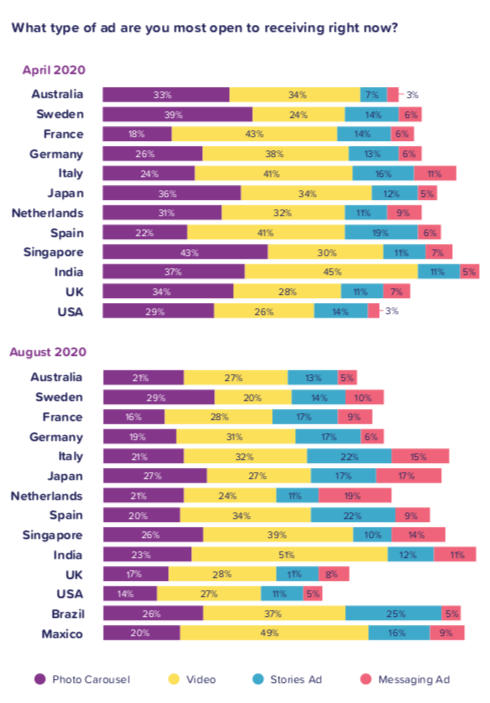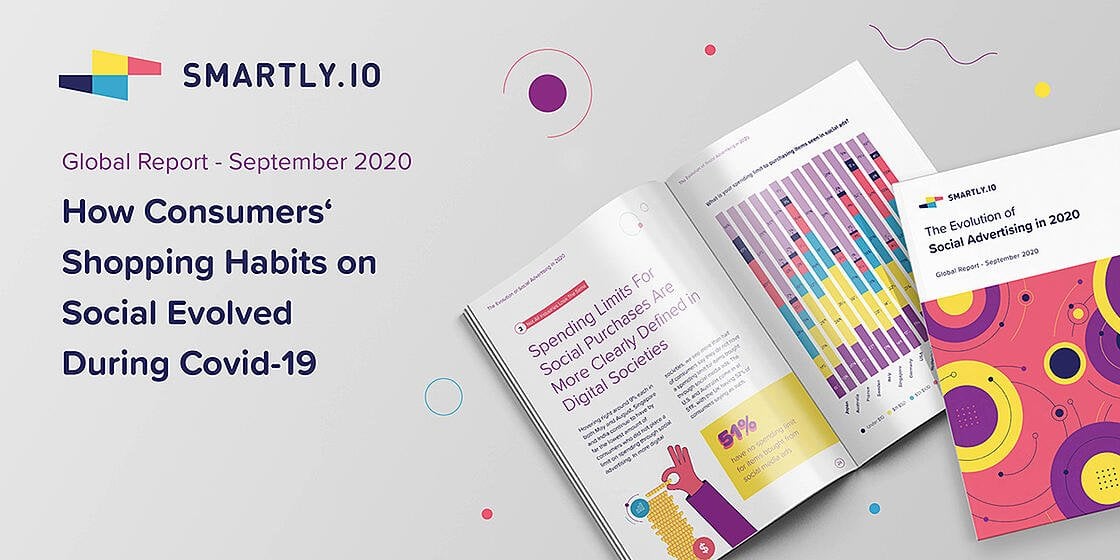
Over the past several months, brands have had to reevaluate their current workflows, budgets, and strategies to adapt to changes brought on by the pandemic.
To help brands prepare and keep up with changes in consumer preferences, Smartly.io surveyed over 2,000 consumers across the globe for the second time this year to better understand how social advertising impacts the way they view brands.
The Report includes:
- What consumers expect to see in social ads
- How consumers’ shopping habits on social have evolved
- Industry-specific trends
An Analysis of the Social Advertising Landscape
The pandemic caused a halt in advertisers campaigns, but now the social ad landscape has begun to level out. Still, there is a lot of uncertainty and fluctuations and advertisers should be prepared for unknown economic scenarios.
The traditional metrics to measure advertising were responding as erratic as the stock market. After the period of halt, many brands are back and shifting budgets from traditional offline media to social. Those brands who maintained social advertising during the pandemic saw periods of cost savings early on. Furthermore, 32% of global consumers are using social media to discover new products or services.
Consumers around the world have responded differently to the pandemic in terms of social media engagement. The tendency shows that early on into the pandemic most consumers in different countries were more engaged with ads on social media than later on.
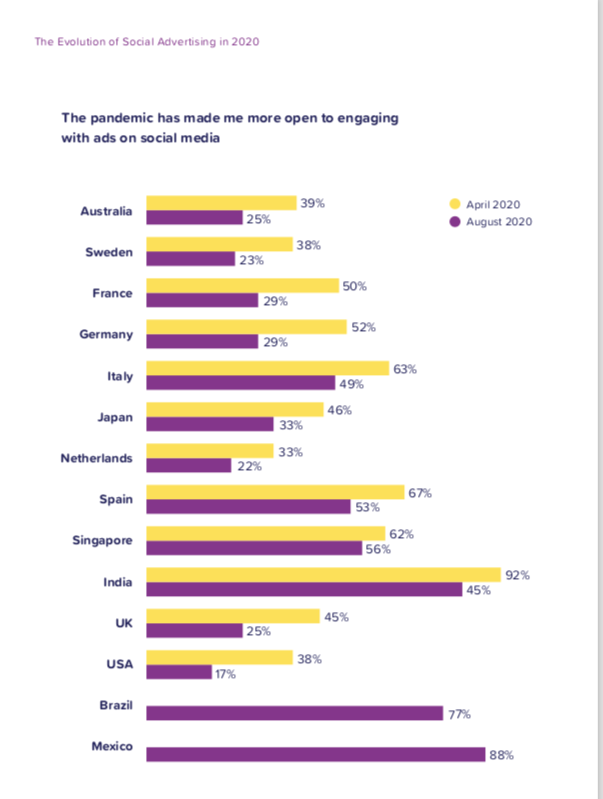
61 per cent of consumers globally say they spend time on social media for connecting with friends and family.
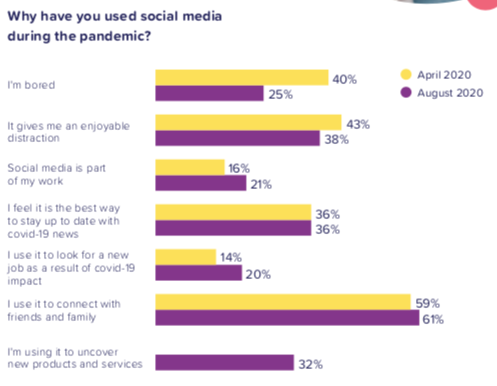
As the situation normalized brands realized consumers are in need of digital services more than ever, resulting in an even more competitive environment than pre-Covid.
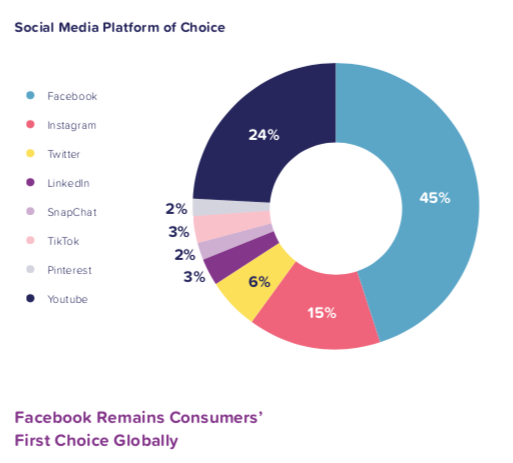
Facebook tops the chart in consumers’ social media platform of choice. There was an overall growth trend across social media platforms during the pandemic.
The type of ads consumers want to see varies around the world, but video leads the format choice. It is important to keep in mind that the format consumers say they prefer does not necessarily drive the best performance.
For optimal results, balance consumer preferences with platform usage habits to inform ad creatives.
33 per cent of consumers want to see brands using their social ads for good.
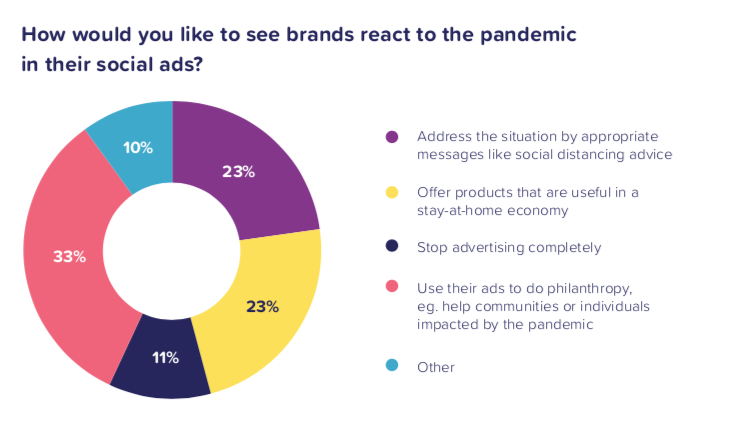
Consumers are making more purchases through social than ever before.
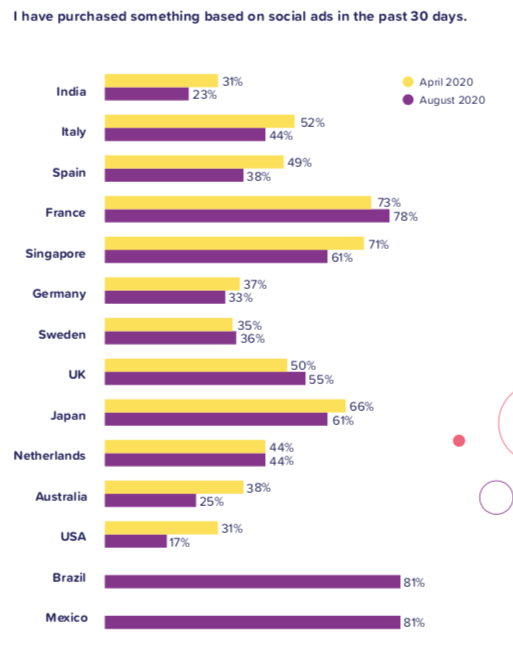

In most markets, fashion products are the items consumers are most willing to purchase over the next 30 days (August to September). The markets that stand out are Mexico 62 per cent, India 63 per cent, and Brazil 56 per cent, where consumers primed for fashion buys. These markets also rank high in groceries, electronics, and digital services.
Shopping for groceries varies in different countries.
Around two-thirds of consumers in Singapore, Mexico, and India are most open to making grocery purchases through social ads over the next 30 days (August to September). France, Australia, Spain, the U.S., and the UK are in the 20-30% range, while around 15% of consumers in Germany, Sweden, and the Netherlands are most open to purchasing groceries through social advertising. Overall, in Europe, there was a dip as conditions are improving, but in Asia and the Americas, there is still a large demand for grocery ads.
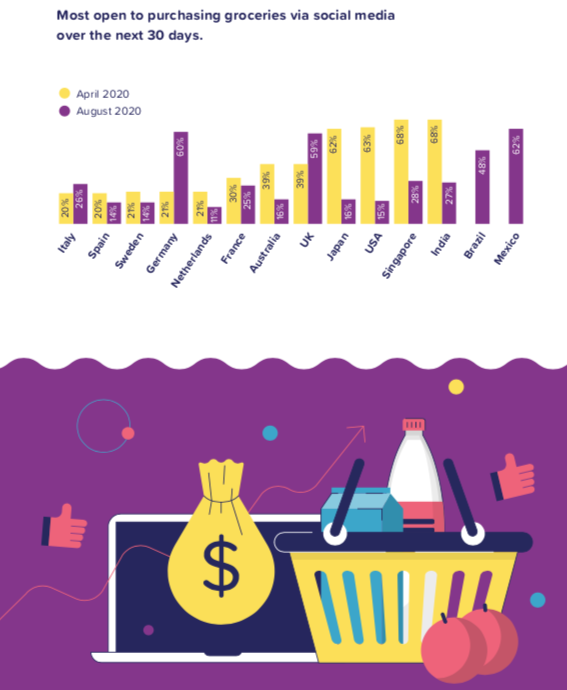
The gamers are open to ads as long as they bring value through lower pricing, new content, and new offers.
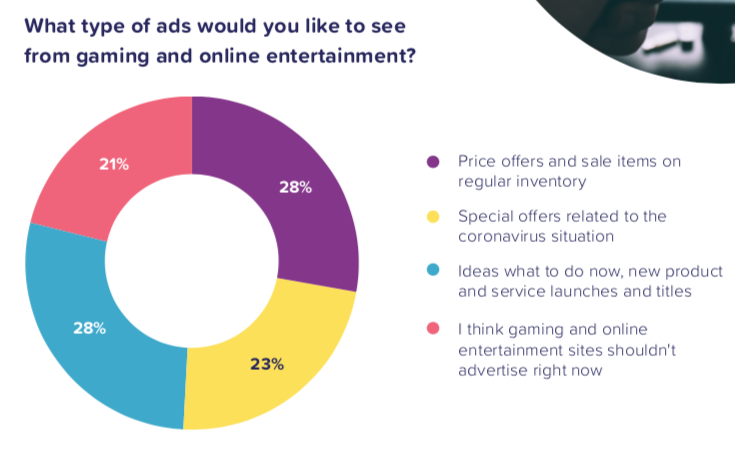
The Covid-19 pandemic has brought many changes in how consumers behave on online channels and their engagement with social advertisement. The shift to e-commerce that was expected to come over the next decade has been sped up.
Cost per Mille (CPM), the most common way to measure advertising prices, has begun to rise in late March, after the initial drop because of the pandemic. Since the rise, there has been much fluctuation across markets. The CPM prices are continuing to rise and the holiday season is most probably increasing the rise. It is important to recognize that different industries have been affected differently. Online entertainment, gaming and similar sectors have remained relatively stable, while retail, especially groceries, has seen many fluctuations in CPM rates due to spikes in demand and the overall industry disruption.
As consumers buying patterns change, many traditional companies had to pivot to digital services, redefining how to approach consumer engagement and user acquisition.
Those brands that accelerated their transition to offer digital services had positive outcomes in ad performance.
The key in the fluctuating times and in events forward seems to depend on the ability to adapt to consumers demands, which determines what brands stay on top.
To see more results and insights get the Smartly.io report.

